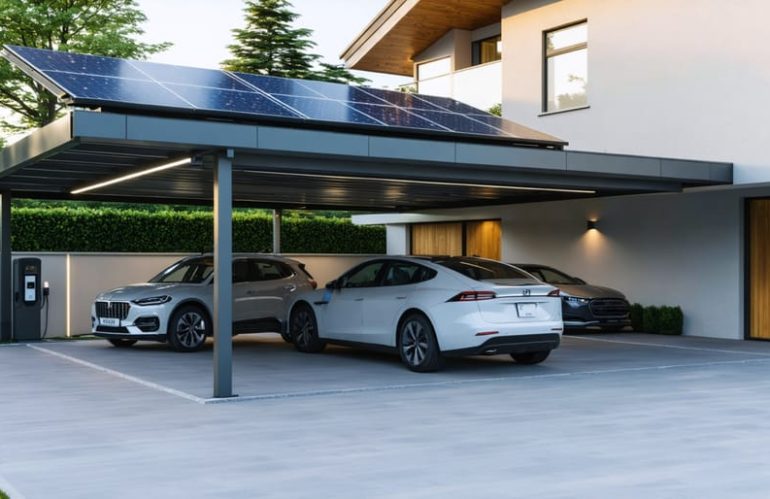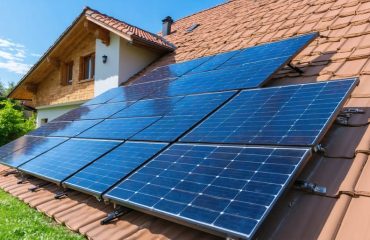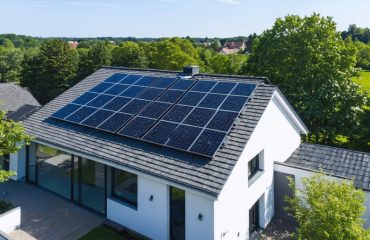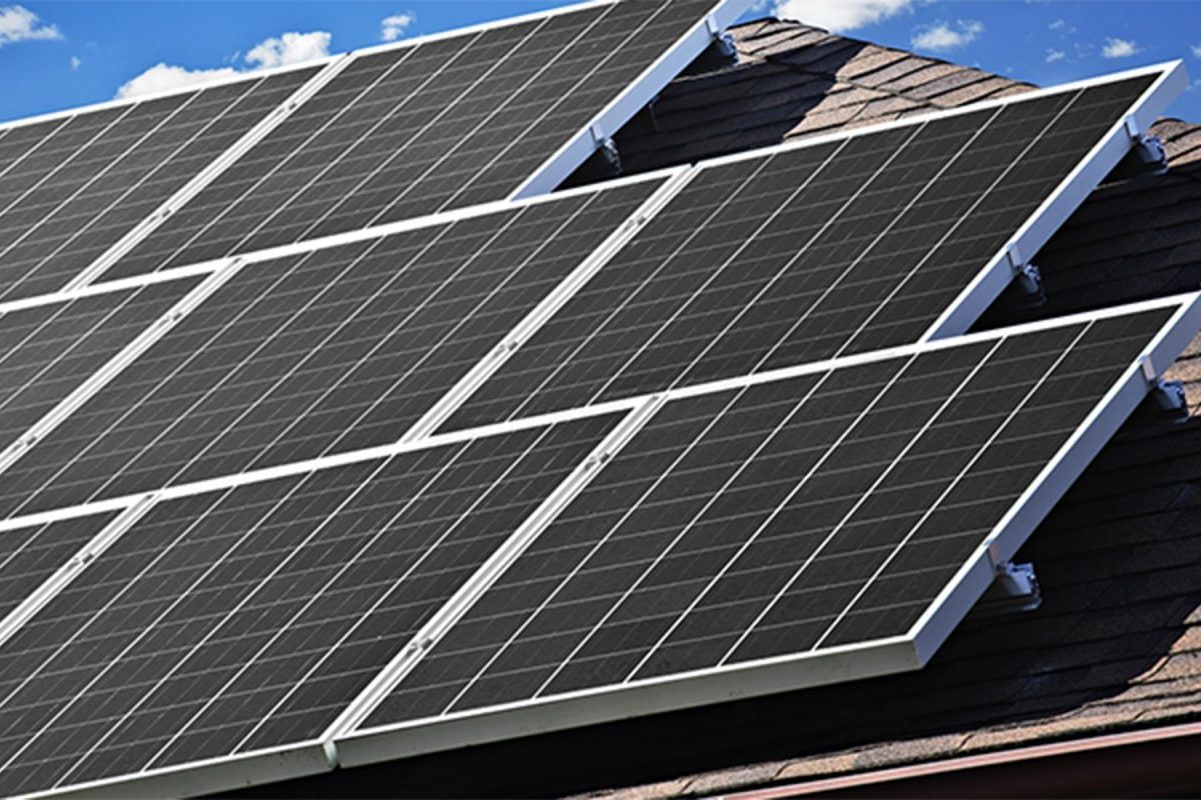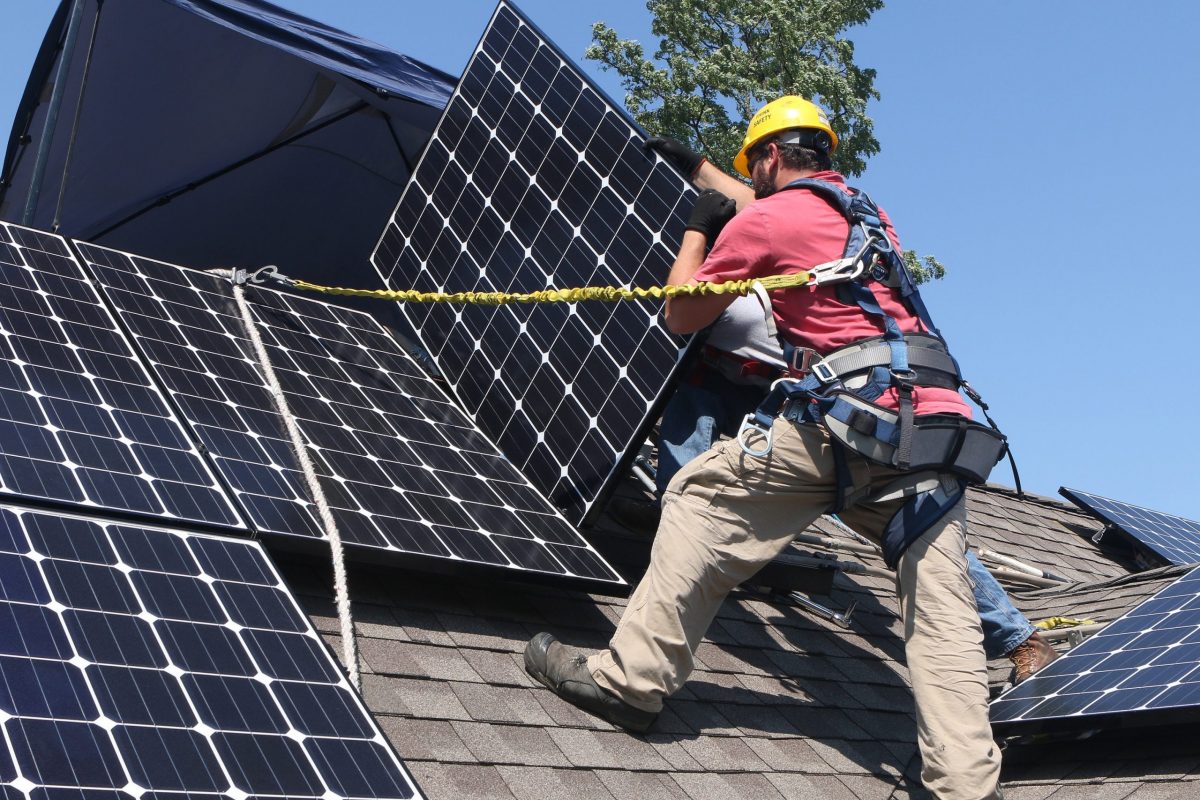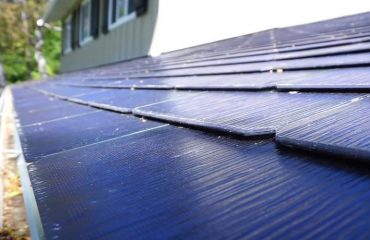Transform your driveway or parking space into a powerful energy-generating asset with a residential solar panel carport – one of today’s most practical innovative solar solutions. These dual-purpose structures deliver premium covered parking while converting unused space into a clean energy powerhouse, typically generating 2-3 times more electricity than traditional roof-mounted systems.
Unlike conventional solar installations, carports require no roof modifications and can be precisely positioned to maximize sun exposure. Modern designs seamlessly blend with residential architecture while incorporating features like integrated LED lighting, EV charging stations, and smart monitoring systems. Homeowners can expect to offset 60-90% of their household electricity costs while potentially qualifying for federal tax credits up to 30% of the installation cost.
With rising energy prices and increased extreme weather events, solar carports offer an intelligent investment in both property value and energy independence. Their elevated design prevents snow accumulation, protects vehicles from harsh elements, and creates valuable outdoor living space – all while producing clean, renewable energy for decades to come.
What Makes Solar Carports Different from Traditional Solar Installations
Dual-Purpose Design Benefits
A residential solar panel carport offers a smart solution that maximizes your property’s functionality. Unlike traditional carports that only shelter vehicles, these innovative structures pull double duty by generating clean energy while protecting your cars from harsh weather conditions, falling debris, and UV damage.
The elevated roof design creates an ideal platform for solar panel installation, utilizing space that would otherwise go unused. This dual-purpose approach eliminates the need to dedicate additional yard or roof space solely for solar panels, making it particularly valuable for homeowners with limited space.
During summer months, the carport provides welcome shade that keeps your vehicles cooler, potentially extending their lifespan and maintaining their appearance. In winter, it shields cars from snow and ice, reducing the time spent on vehicle maintenance. Meanwhile, the solar panels above work continuously to convert sunlight into electricity, powering your home and potentially charging an electric vehicle underneath.
This practical combination of benefits makes solar carports an attractive investment for homeowners looking to embrace sustainable living without sacrificing functionality or aesthetics.
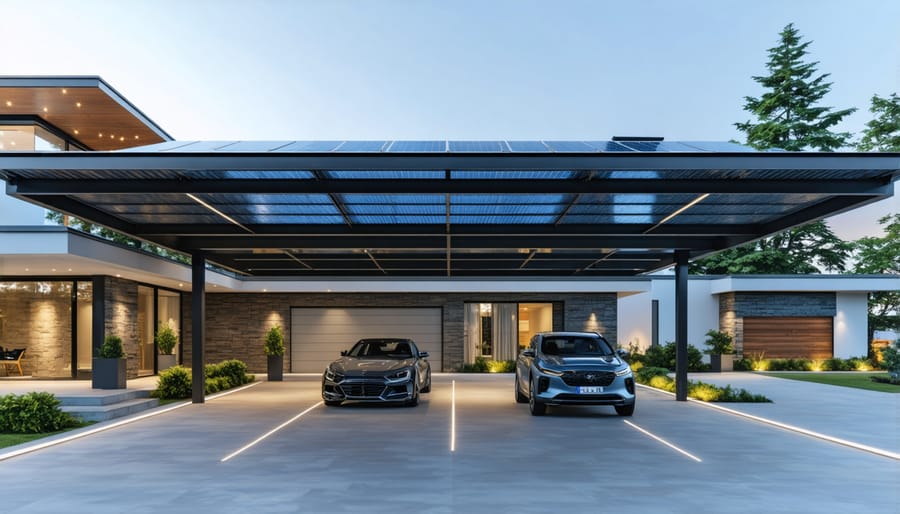
Space Optimization Advantages
A solar panel carport offers an ingenious solution for homeowners who want to go solar but face space limitations. Unlike traditional rooftop installations, these structures make use of otherwise underutilized space above your parking area, effectively doubling the functionality of your property. This is particularly valuable in urban settings where yard space is limited or for homes with roof designs that aren’t ideal for solar panels.
For properties with shaded roofs, multiple skylights, or complex architectural features that complicate rooftop solar installation, carports provide an excellent alternative. They can be positioned to capture optimal sunlight without the constraints of existing roof angles or orientations. This flexibility often results in better energy production compared to compromised rooftop installations.
Additionally, solar carports can be designed to accommodate future expansion of your solar system. If you’re planning to add an electric vehicle to your household or anticipate increased energy needs, the carport structure can be sized accordingly, providing scalability that might not be possible with limited roof space. This forward-thinking approach ensures your investment continues to meet your evolving energy needs while maintaining efficient use of your property’s footprint.
Customization Options for Your Solar Carport
Size and Coverage Options
Solar panel carports come in various sizes to accommodate different parking needs and energy goals. Standard single-vehicle designs typically measure 12 feet wide by 20 feet deep, providing ample coverage for one car while generating approximately 4-6 kW of solar power. For families with multiple vehicles, double-wide carports spanning 20-24 feet in width offer protection for two cars side by side.
Larger installations can extend to three or four-car configurations, with dimensions reaching up to 40 feet in width. These expanded structures not only shelter more vehicles but also create additional solar generation capacity, potentially producing 12-16 kW or more of clean energy.
Height considerations are equally important, with most residential carports standing between 9 and 12 feet tall. This allows for comfortable clearance of standard vehicles, including SUVs and light trucks. Some designs feature adjustable heights or sloped roofs to optimize solar panel angles while ensuring proper drainage.
For homeowners with RVs or larger vehicles, custom dimensions are available, with heights reaching up to 14 feet and extended depth options of 24-30 feet. When planning your carport size, consider not only current vehicle needs but also future requirements and available yard space. Remember that larger structures generally offer more power generation potential, though local building codes and setback requirements may influence maximum allowable dimensions.
Panel Types and Configurations
When designing your solar carport, various solar panel customization options are available to match your energy needs and aesthetic preferences. The most common types include monocrystalline, polycrystalline, and thin-film panels, each offering different efficiency levels and visual appearances.
Monocrystalline panels are the most efficient and feature a sleek black appearance, making them popular for modern carport designs. Polycrystalline panels, while slightly less efficient, offer excellent value and have a distinctive blue hue. Thin-film panels, though less common, provide flexibility in design and work well with curved carport structures.
Panel configurations can be customized to maximize sun exposure and energy production. Popular arrangements include:
– Full coverage layout: Panels cover the entire roof surface
– Offset design: Panels arranged to allow some natural light through
– East-west orientation: Optimal for maximum daily sun exposure
– South-facing configuration: Ideal for consistent energy production
The number of panels you’ll need depends on your energy goals, available space, and local climate conditions. Most residential solar carports accommodate 6-12 panels, typically generating 2-4 kilowatts of power. Your installer can help determine the ideal configuration based on your specific requirements and local solar conditions.
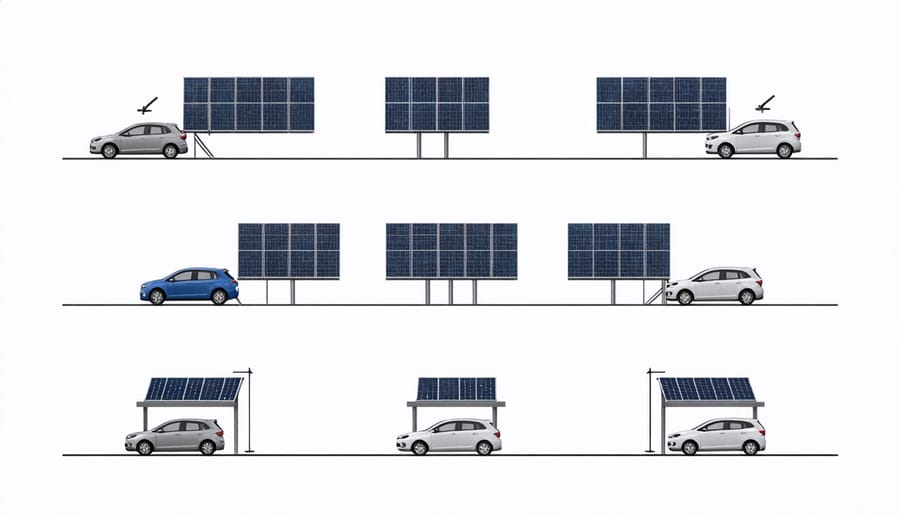
Aesthetic Choices
A solar panel carport doesn’t have to be just functional – it can be a stunning architectural feature that enhances your home’s curb appeal. Modern designs offer numerous customization options to ensure your carport seamlessly integrates with your existing home aesthetics.
The supporting structure comes in various materials, including sleek aluminum, classic wood, and durable steel, each offering distinct visual appeal. You can choose from different frame colors to match your home’s trim or create an intentional contrast. Popular finishes include matte black for a contemporary look, bronze for traditional homes, and white for a clean, modern appearance.
The solar panels themselves can be arranged in different patterns, from the traditional grid layout to more creative configurations that add visual interest. Many manufacturers now offer low-profile panels with black frames and backing that create a more unified, sophisticated look.
Lighting elements can be incorporated underneath the structure, serving both practical and aesthetic purposes. LED strips or spotlights can illuminate your vehicles while creating ambient evening lighting for your driveway.
Additional design elements like decorative end caps, ornamental brackets, or complementary landscaping can further enhance the structure’s appearance. Some homeowners opt to include climbing plants on supporting columns or integrate the carport into a broader landscape design, creating a harmonious transition between the structure and surrounding garden areas.
Installation and Integration Considerations
Site Requirements
Before installing a solar panel carport, your property needs to meet specific requirements to ensure optimal performance and safety. The ideal location should receive maximum sunlight exposure, typically facing south in the Northern Hemisphere, with minimal shade from trees, buildings, or other structures. Most residential properties will need at least 20 feet by 20 feet of clear space to accommodate a standard two-car solar carport.
Your site should have level ground or the ability to be leveled without excessive earthwork. The soil conditions must be suitable for supporting the structure’s foundation, which typically requires concrete footings. Local building codes may specify minimum setback requirements from property lines and other structures, so check these regulations early in your planning process.
Consider accessibility for construction equipment and future maintenance. There should be clear access routes for vehicles and machinery during installation. Underground utilities, such as water lines, gas pipes, or electrical cables, must be identified and marked before construction begins.
The proximity to your home’s electrical panel is also important, as shorter cable runs are more efficient and cost-effective. Your existing electrical system should have the capacity to handle the additional power input from the solar panels. Some homes may need an electrical panel upgrade to accommodate the new solar installation.
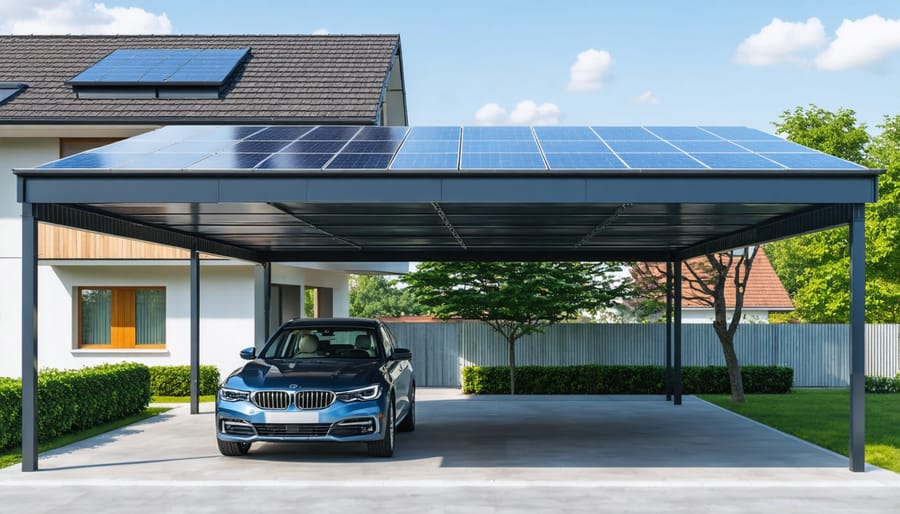
Connection to Home Power Systems
Connecting your solar carport to your home’s electrical system is a straightforward process that integrates seamlessly with your existing power setup. During the solar installation process, professional electricians will install an inverter system that converts the DC power generated by your panels into AC power that your home can use.
Most solar carports connect to the main electrical panel through a dedicated circuit breaker, ensuring safe power distribution throughout your home. When your carport produces excess energy during sunny days, this power can either feed back into the grid (if you have net metering) or be stored in a battery system for later use.
Adding a battery storage solution, such as a Tesla Powerwall or LG Chem RESU, enables you to store excess energy for use during nighttime or cloudy days. This setup provides greater energy independence and can serve as backup power during outages. Modern systems also come with smart monitoring capabilities, allowing you to track your energy production and consumption through user-friendly mobile apps.
The integration includes safety features like automatic shutdown systems and surge protection, ensuring your home’s electrical system remains protected. Your local utility company will install a bi-directional meter to measure both the power you draw from and send to the grid, making the entire system work harmoniously with your existing home infrastructure.
Investment and Returns
Cost Considerations
The cost of a residential solar panel carport typically ranges from $20,000 to $50,000, depending on size, design, and local installation rates. While this initial investment may seem substantial, several factors can significantly reduce the overall expense. Federal tax credits currently offer a 30% deduction on total installation costs, and many states provide additional incentives, rebates, or grants.
Local utility companies often offer net metering programs, allowing homeowners to sell excess power back to the grid, further offsetting installation costs. The dual functionality of these structures – providing both covered parking and clean energy generation – makes them a cost-effective alternative to separate carport construction and rooftop solar installation.
Long-term savings are considerable, with most homeowners recouping their investment within 5-10 years through reduced electricity bills. Maintenance costs are typically minimal, requiring only occasional cleaning and routine inspections. Additionally, solar carports can increase property value, making them an attractive investment for forward-thinking homeowners. Many installers offer financing options, including solar loans and lease agreements, making these systems more accessible to budget-conscious households.
Long-term Benefits
Installing a residential solar panel carport delivers substantial long-term advantages that go beyond immediate energy savings. As a significant solar power investment benefits, homeowners can expect to see their electricity bills decrease by 50-90%, depending on their local climate and energy consumption patterns. This reduction in utility costs becomes even more valuable as energy prices continue to rise over time.
Property value enhancement is another crucial benefit, with studies showing that homes with solar installations typically sell for 4.1% more than comparable properties. Solar carports are particularly attractive to potential buyers because they offer both functional parking space and clean energy generation. Additionally, these structures often qualify for various tax incentives and rebates, which can significantly offset the initial installation costs.
The durability of modern solar panels, typically warranted for 25-30 years, ensures decades of reliable energy production. Many homeowners find that their solar carports pay for themselves within 5-7 years, after which they enjoy essentially free electricity while contributing to a more sustainable future. This combination of financial savings, increased property value, and environmental benefits makes solar carports an excellent long-term investment for forward-thinking homeowners.
A residential solar panel carport represents a smart investment that combines practical functionality with sustainable living. By choosing to install this innovative solution, you’re not just creating a protected parking space – you’re taking a significant step toward energy independence and environmental stewardship.
The benefits of solar carports are clear and compelling. You’ll enjoy reduced energy bills while protecting your vehicles from harsh weather conditions. The potential for increased property value, available tax incentives, and the satisfaction of generating clean energy make this investment even more attractive. Many homeowners find that their solar carports pay for themselves through energy savings within 5-10 years, while continuing to provide benefits for decades to come.
Whether you opt for a basic design or a more elaborate structure with integrated EV charging capabilities, your solar carport can be customized to meet your specific needs and complement your home’s architecture. The technology has never been more reliable, and installation processes have become increasingly streamlined.
Don’t wait to start your journey toward sustainable energy independence. Contact local solar installers to explore your options and get detailed quotes. With rising energy costs and growing environmental concerns, there’s never been a better time to invest in a residential solar panel carport. Make the smart choice for your home, your wallet, and our planet’s future.

